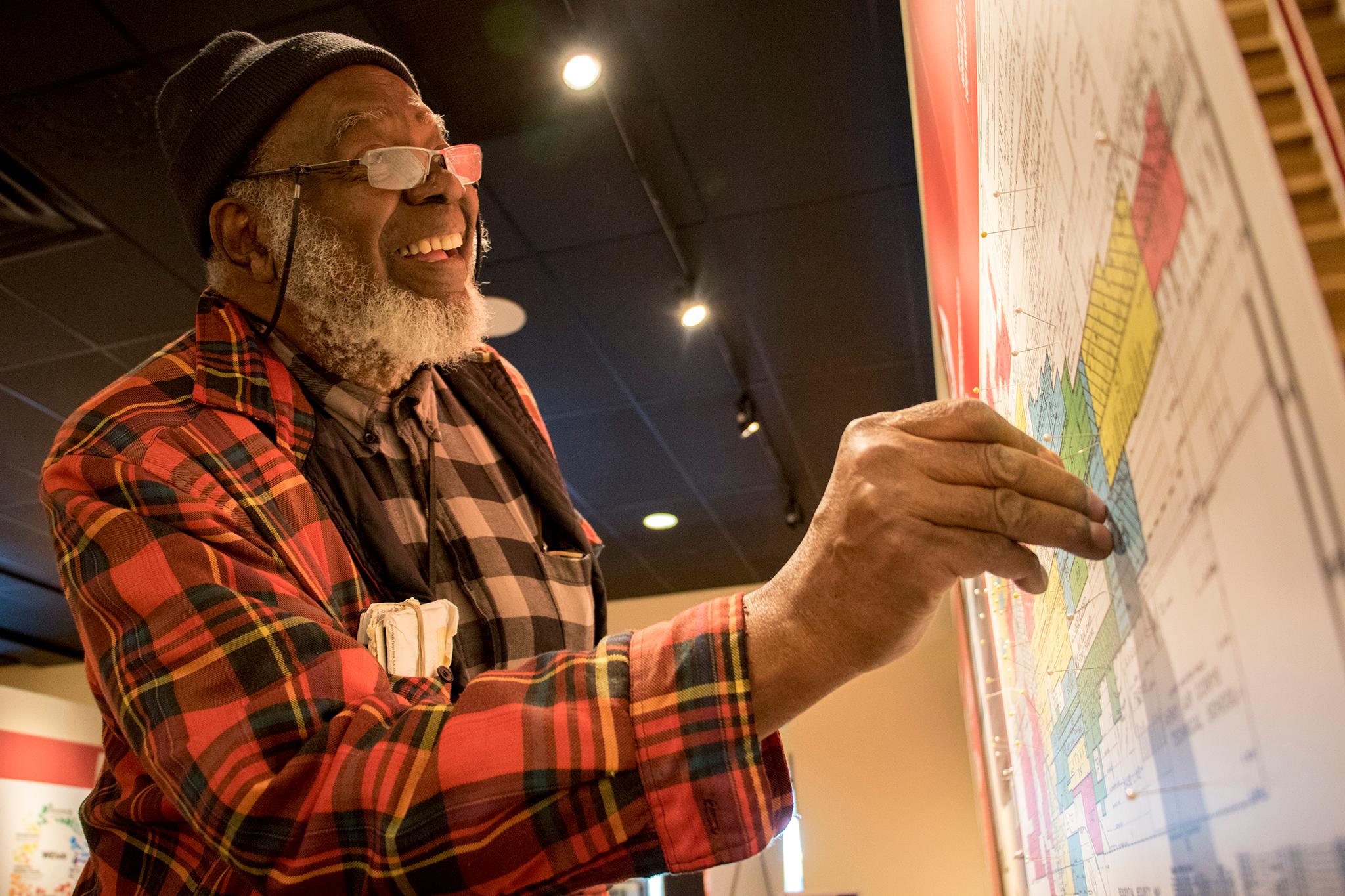Update: After an initial run ended at Blair-Caldwell, the temporary exhibit has opened at the McNichols Civic Center Building, where it will be on display through July.
The 1930s-era map on a gallery wall does not quite match up with A.D. Lewis' own memories of Denver. He peers closely, his hand holding a pin hovering. Then he pushes the pin at a spot on the map where he once owned a house, and steps back.
"This is like 40 years of my life you've got up here. Maybe 60," Lewis said of a show that opened Thursday at the Blair-Caldwell African American Research Library that traces the history and consequences of official racial discrimination in housing and development in Denver and across the United States. "Undesign the Redline" will be at Blair-Caldwell until Dec. 15, and at the Webb Municipal Office Building Dec. 18-Jan. 2.
"There's a lot here. And there's a lot that they don't have," Lewis added. "I guess you have to be a person who's lived here to know that."
The creators of "Undesign the Redline" and the team that brought the nationally touring show to Denver are looking for just that reaction. Comments and suggestions from people such as Lewis have been incorporated into the show since its first iteration opened in New York. Lewis said he'd like to see even more exploration of the Chicano movement and development-driven displacement of Hispanics in Denver today, issues the show does address.
"We want people to come in and give feedback and become part of the conversation," said Jennie Rodgers, vice president and Denver market leader for Enterprise Community Partners, a national nonprofit that focuses on affordable housing and equity.


Enterprise worked with the Denver Foundation Shift Research Lab, the Colorado Housing and Finance Authority, Wells Fargo and city officials to bring the show to Denver. Researchers at the Denver Public Library's Western History Collection and other experts here added local elements to the show created by Designing the WE, a New York design studio with a social conscious.
Text, graphics, photographs and maps detail redlining, the federal government's practice of denying home loans to residents of neighborhoods that were predominately minority or immigrant. On maps, the "best" neighborhoods were shaded green, next-best blue, declining yellow and red hazardous. The map Lewis surveyed was an enlarged version of one underwriters would have used in the 1930s showing Five Points, then African-American and now home to Blair-Caldwell, a bright red. Smaller towns would not have had the maps, but underwriters would have referred to the federal criteria.
"There weren't any areas that weren't impacted," said Katie McKenna, senior program director for Enterprise in Denver.
Other maps in "Undesign the Redline" use overlays to show that the redlined neighborhoods of the past are today's areas where residents have low income, wealth and savings and high poverty and unemployment. The denial of loans meant blacks and other minorities did not have the same chance to turn their homes into wealth they could pass on to their children and grandchildren. The redlined neighborhoods were also often neglected when it came to infrastructure and city services.
"You can see how our explicit policies of the past have turned into the structural racism of today," McKenna said.
Rodgers added: "If you look at the areas that are gentrifying or are prone to displacement (today), they match up with the redlined areas."
The Colorado Office of Health Equity contributed its own map to the show that illustrates how redlined neighborhoods are now those with the unhealthiest people, a result of stress, environmental issues, access to nutritious for and other issues.
The exhibit includes artifacts like an agreement for a Denver neighborhood that stipulates that "only persons of the Caucasian race shall own, use or occupy any dwelling or residence ... provided, however, that occupancy by persons of another race who are employed as domestic servants by the occupying owner or occupying tenant shall not constitute a violation of the protective covenant."
Rodgers said, "People are tempted to think we don't have the same issues as East Coast cities, we're not the South. But this is Denver."
Other parts of the exhibit laud activists who pushed back, such as Chicano activist Rodolfo "Corky" Gonzales and other founders of Escuela Tlatelolco, a dual-language alternative school.
"We've got some great local stories here," Rodgers said.
Stories that could inspire new generations to consider how to undo the continuing impact of past deliberate, discriminatory actions and policies. "Undesign the Redline" will be accompanied by discussions Enterprise is hosting for community members, health and housing providers, policy makers and politicians.
"We're bringing people into the library to have discussions about what to do going forward," Rodgers said.














